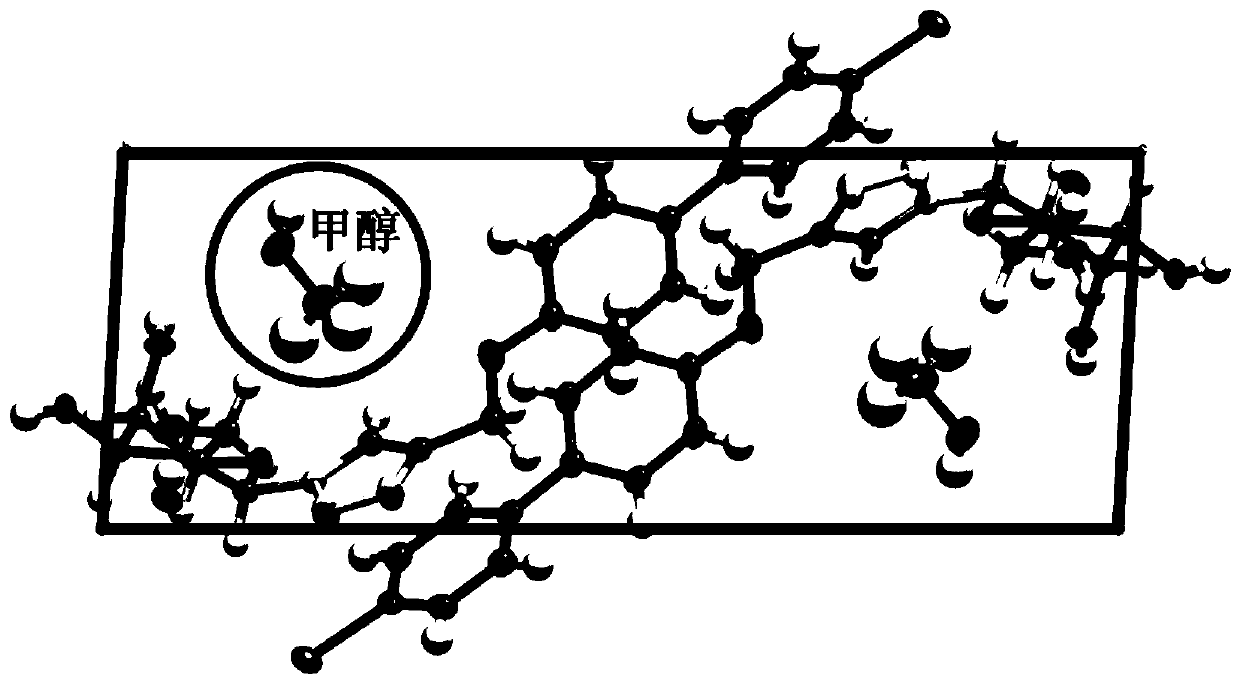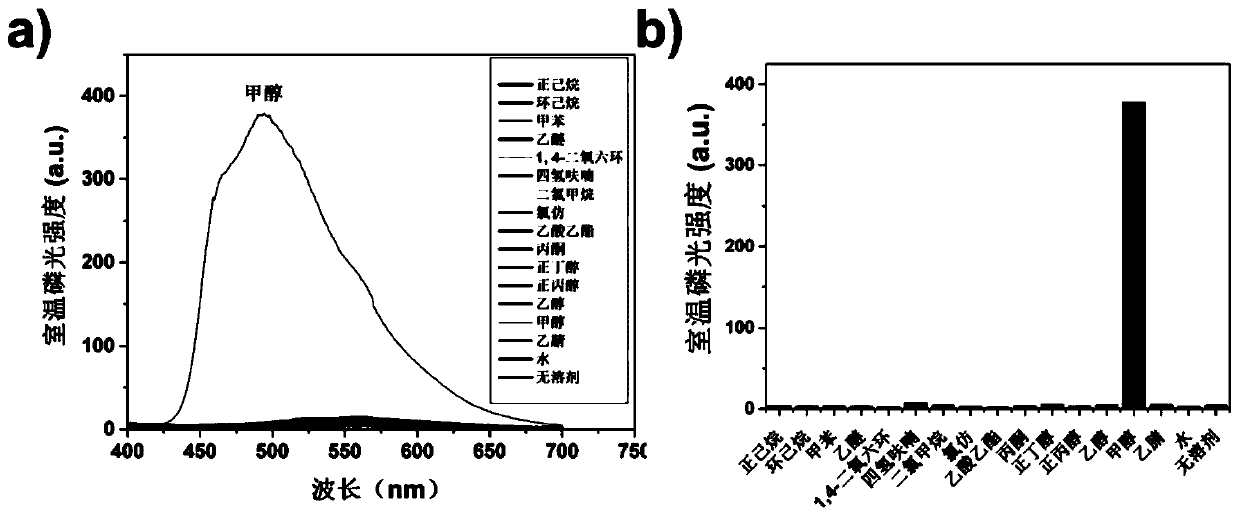Pure organic phosphorescence small molecule material used for methanol solvent identification, and preparation method for pure organic phosphorescence small molecule material
A phosphorescent molecule and organophosphorus technology, which is applied in the analysis of materials, luminescent materials, and material analysis by optical means, can solve the problems of lack of solvent and other small molecule selectivity, reduced material sensitivity, and scarcity of sensors, etc. The effect of reusability, easy availability of raw materials, and broadening application prospects
- Summary
- Abstract
- Description
- Claims
- Application Information
AI Technical Summary
Problems solved by technology
Method used
Image
Examples
Embodiment 1
[0059] This embodiment provides a pure organic phosphorescence small molecule material for methanol solvent recognition, its general structural formula is:
[0060]
[0061] Among them, n represents the length of the alkyl chain, and its value is 1 or 2; R 1 Represents a series of monosaccharide substituent structures; R 2 It represents a class of phosphorescent molecular groups with a biphenyl skeleton structure.
[0062] The phosphorescent molecular group having a biphenyl skeleton structure includes the following basic structures:
[0063]
[0064] Wherein, X is a halogen heavy atom. The heavy halogen atom is one of Cl, Br and I.
[0065] The phosphorescent molecular group having a biphenyl skeleton structure is a biphenyl structural skeleton that can undergo structural twisting.
Embodiment 2
[0067] This embodiment provides a pure organic phosphorescent small molecule material, the general structural formula of which is:
[0068]
[0069] Among them, n=1, monosaccharide structure R 1 is the structure of β-D-galactose, R 2 is a halogen heavy atom modified biphenyl, X is Cl, Br, or I.
[0070] The preparation method of the pure organic phosphorescent small molecule material comprises the following steps:
[0071] Modification of phosphorescent groups containing biphenol skeleton: Add biphenol modified by heavy halogen atoms, 3-bromopropyne and anhydrous potassium carbonate into anhydrous acetonitrile and heat the reaction under the protection of inert gas for 12-24 hours until the reaction is complete. Separation and purification by column chromatography to obtain biphenyl with propargyl group modified at the end;
[0072] Acquisition of intermediates: Disperse the above-mentioned propargyl-modified biphenyl and β-substituted galactose azide in an organic solve...
Embodiment 3
[0078] In this embodiment, a pure organic phosphorescent small molecule material has a structural formula:
[0079]
[0080] Among them, n=1, monosaccharide structure R 1 is the structure of β-D-galactose, R 2 is a halogen heavy atom modified biphenyl, and X is Br.
[0081] The preparation method of the pure organic phosphorescent small molecule material comprises the following steps:
[0082] React 4'-bromo-[1,1'-biphenyl]-4-ol, 3-bromopropyne and anhydrous potassium carbonate in anhydrous acetonitrile under the protection of inert gas at 40-60°C for 12-24 hours to The reaction is complete, and then separated and purified by column chromatography to obtain 4-bromo-4'-(2-propargyl-1-oxyl)-1,1'-biphenyl;
[0083] Add tetraacetyl-α-D-bromogalactose and excess sodium azide to anhydrous N,N'-dimethylformamide, stir at 40°C for 6 hours, filter, and wash the product in the filtrate with silica gel Purified by column chromatography to obtain tetraacetyl-β-D-azidogalactose;
...
PUM
 Login to View More
Login to View More Abstract
Description
Claims
Application Information
 Login to View More
Login to View More - R&D
- Intellectual Property
- Life Sciences
- Materials
- Tech Scout
- Unparalleled Data Quality
- Higher Quality Content
- 60% Fewer Hallucinations
Browse by: Latest US Patents, China's latest patents, Technical Efficacy Thesaurus, Application Domain, Technology Topic, Popular Technical Reports.
© 2025 PatSnap. All rights reserved.Legal|Privacy policy|Modern Slavery Act Transparency Statement|Sitemap|About US| Contact US: help@patsnap.com



